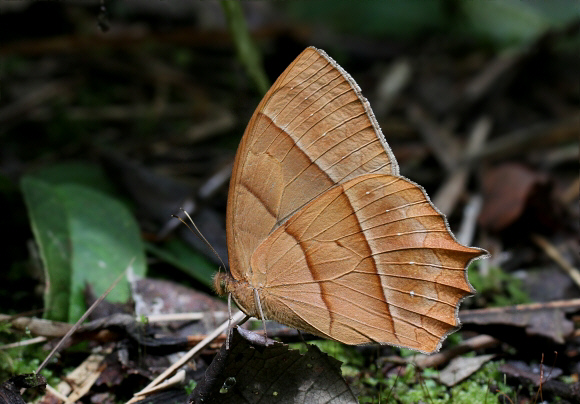
Introduction
There are 1100 known species of Satyrinae in the neotropical region. About 400 of these are placed in the Euptychiina. Butterflies within this tribe include the ‘ringlet’ genera Euptychia, Magneuptychia, Harjesia, Cissia, Caeruleuptychia, Magneuptychia, Harjesia etc; together with Oressinoma and the various ‘wood nymph’ genera i.e. Parataygetis, Posttaygetis and Taygetis. Most are inhabitants of the forest understorey and tend to fly close to the ground. They generally avoid sunlight and prefer to fly at dawn or on cloudy days when light levels and temperatures are low.
The genus Taygetis contains 28 known species, although several more are likely to be discovered. They vary in wingspan between about 5-11cms, and are characterised by having dull brown wings, usually cryptically patterned on the underside so that they resemble dead leaves. Most species also have a series of prominent ocelli on the ventral surface. All species are seasonally dimorphic i.e. they produce distinct wet and dry season morphs. The dry season forms tend to be paler and have a slightly more exaggerated wing shape. Many species are also subject to geographical variation in the colour and contrast of the wing markings, although the ocelli, submarginal wavy line, and the black spots in the discal cells are consistent in all races.
Taygetis chrysogone is distributed throughout the Amazonian faunal region from Panama to Peru.
Habitats
This species breeds in cloudforest at elevations between about 500-1800m.
Lifecycle
The eggs of Taygetis species are smooth, globular and laid singly on or close to the foodplants. The caterpillars are typically Satyrine in appearance, with smooth pale green bodies marked with thin longitudinal lines, a pair of short tail prongs and a matching pair of horns projecting forward from the head capsule. They feed solitarily after dusk, on grasses or bamboos according to species. The pupae are typically pale green, and have a bifid head and a curved abdomen.
Adult behaviour
Like all other Taygetis species, this butterfly is a denizen of the dark undergrowth, and flies mainly in the early mornings, between about 0800-0900hrs. At other times it usually hides away amongst leaf litter around the base of trees, but will venture into open areas if the weather is overcast.
